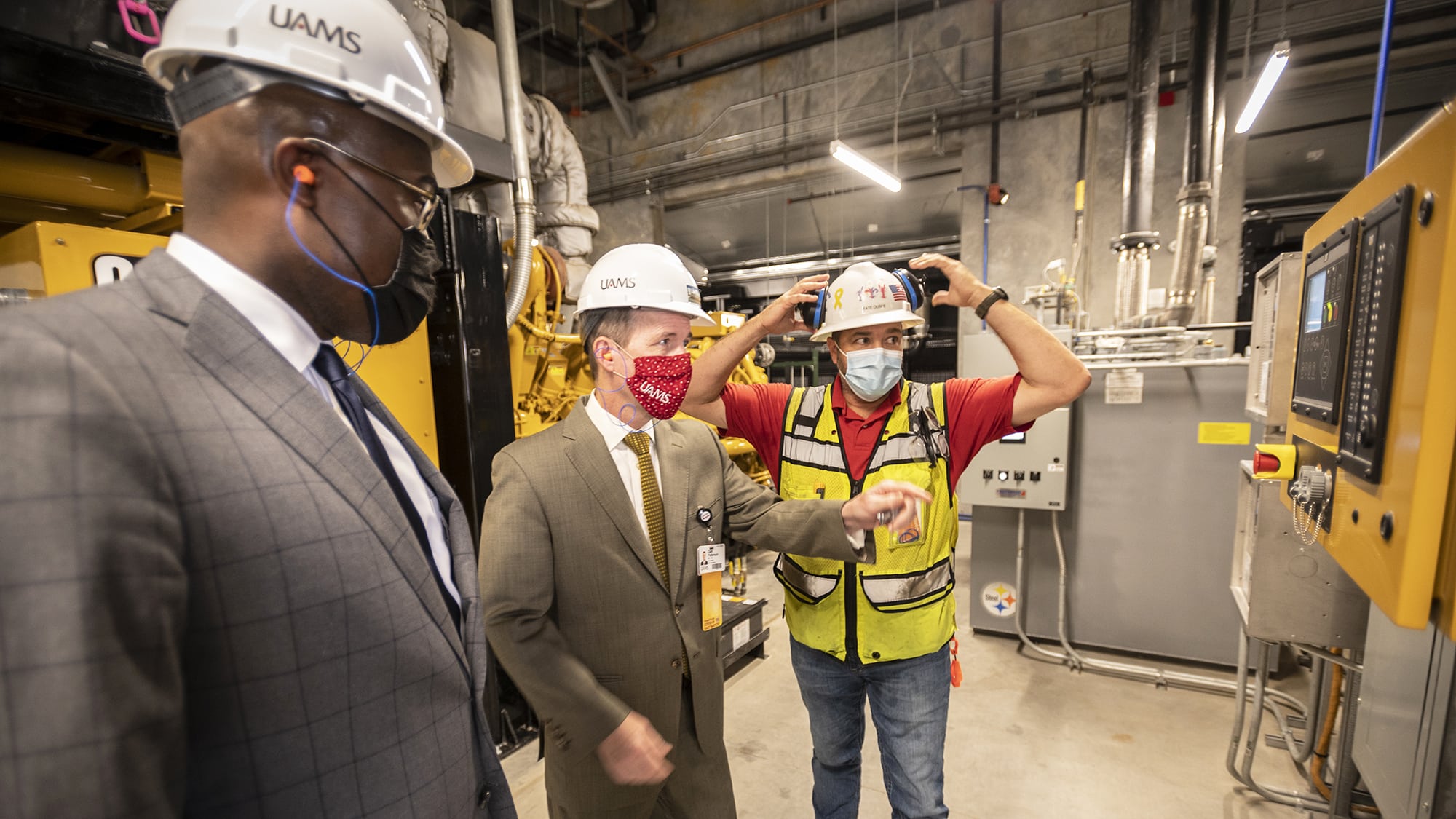Energy Project Attracts National Attention, Awards
| As it nears completion in December, the $150 million UAMS energy project already is producing cost savings and garnering national praise.
It also helped earn an invitation for Ian Hadden, executive director of UAMS Engineering and Operations, to participate in a panel discussion about the project and others at the VITAL 2022 conference earlier this summer in Boston.
A nonprofit association of hospitals and health systems dedicated to high-quality care for all, including the most vulnerable patient populations, American’s Essential Hospitals organized the conference.
Earning that recognition and getting the project close to the finish line was an effort three years in the making. On the way there, the project faced obstacles from a global pandemic. UAMS broke ground Nov. 20, 2019 in a ceremony marking the start of construction for a new $54 million electrical power plant on the east side of the Little Rock campus that was a major component of the overall project.
A bond issue approved by the University of Arkansas Board of Trustees funded the work, and once fully implemented the project is estimated to result in $4.8 million in savings annually.
However, the bond financing requires that all principal project work be complete by December, and the three-month shutdown at the start of the pandemic in 2020 was a significant delay.
“The pandemic made the timeline hard. We had three years to spend the bond money,” said Christina Clark, MBA, chief operating officer and vice chancellor for Institutional Support Services. “We are trying to wrap that up with a bow, but the disruption really compressed the work schedule.”
Savings already produced by the energy project enabled it to expand to areas of campus not originally a part of its scope.
“We have seen additional savings that we were able to put into campus. That’s how we were able to renovate the Barton Building, which included upgrading it and taking it to shell space. Otherwise, we wouldn’t have been able to do that part. It wasn’t planned in the project scope originally,” Clark said.
The electrical systems in some buildings were original to their 1950s-era construction. Barton’s exterior also was extensively updated and improved both functionally and aesthetically.
The project further upgraded campus building control systems, interior and exterior lighting, electrical and mechanical systems.
“Most of these upgrades are behind-the-scenes things that no one is going to recognize, but they will make our campus more efficient,” Clark said.
A $75,000 grant from America’s Essential Hospitals funded the recent installation and activation of occupancy sensors for lighting in 37 elevators on the Little Rock campus.
Hadden said workers retrofitted the entire campus with new lamps or fixtures. What may look like a fluorescent tube is probably an LED bulb now.
“UAMS was struggling with high maintenance costs before we started this. We replaced and upgraded controls. That was a significant undertaking. Our generators were past their useful life,” he said.
Another thing that likely passed unnoticed by most of Team UAMS, patients and visitors was the source of power. Like many ratepayers in Central Arkansas, the university pays for electricity from Entergy. However, UAMS is a “demand-response entity.”
Because the university is a high-demand customer that now can generate electricity for all of its needs for as long as four days before refueling, Entergy asked UAMS to go off the grid about a dozen times this summer because of peak demand from other customers.
“We created additional redundancy paths to strengthen electrical reliability, and that gives us more options on ways to feed buildings with electrical power,” Hadden said.
The project was a huge challenge, Hadden said.
“If you drew a diagram of where the chillers are and the HVAC systems, it is a pretty good spider-web network,” Hadden said, citing an example of one of its complexities. “It takes a lot of information to run all those systems smartly and efficiently.”
As the project moves into its final quarter, UAMS engineering and operations teams are training to operate the new generators, fuel and control systems.
The work of pulling those technologies from the mid-20th century and into the early 21st isn’t over though. Clark said a study is underway to examine the feasibility of solar power generation and where UAMS might deploy it.
Clark said UAMS Chancellor Cam Patterson, M.D., MBA “wants us to be the most sustainable academic medical center in the United States. We have a big job to do, but we are on our way to get there.”
